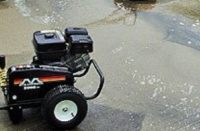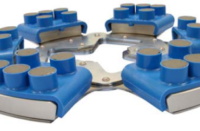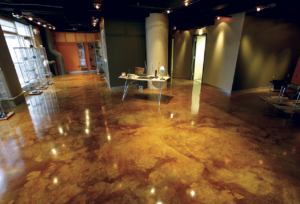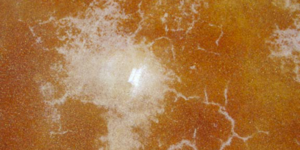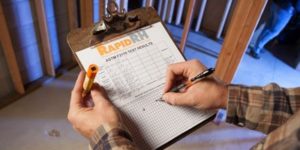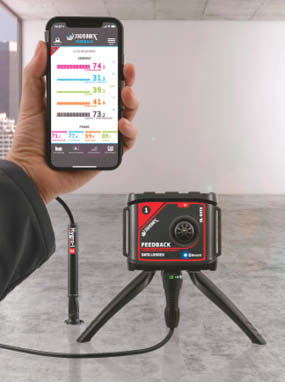
Technology continues to do its part to turn working with concrete from an art into a science. Take the matter of moisture in concrete slabs.
A few years ago, determining whether moisture was present in a slab was mainly a matter of eyeballing the project and then rolling the dice on the best solution to an apparent problem.
Now, not only can technology help pin an exact number on the amount of moisture present, but it can provide — and remember — additional data, as well.
The earliest efforts to measure the amount of moisture present relied on weighing packets of calcium chloride that had been strategically placed around the job site per an ASTM requirement and allowed to sit for 72 hours.
Today, most contractors favor using electrodes drilled into the concrete — again in the same frequency required by ASTM — that can measure not only relative humidity but also temperature and, depending on the manufacturer, other climate conditions. Bluetooth technology is then used to read the information, record it and send the data to the contractor in a choice of formats.
Two of the leading purveyors of testing equipment for the industry are Wagner Meters in Rogue River, Oregon, and Tramex Moisture Meters of Kilmacanogue, Ireland. Both companies use electrodes drilled into the concrete, then read for their information.
“You drill into the slab to 40 percent of whatever the overall thickness is,” says Jason Spangler, Wagner’s product manager. “Once you do that, you vacuum it out, put the sensor in there, cap it and leave it for 24 hours to get your reading.”
Accepting a measurement after 24 hours is relatively new to the process, he adds, and was approved earlier in 2018 by ASTM after a precision-and-bias study showed that a 24-hour reading was essentially identical with a reading after 72 hours.
While the biggest advantage of these systems is to identify slabs where moisture can be a problem for a topping application — including tile and carpet — it’s providing additional info while the job is being worked.
For instance, says Ronan Carrigy, marketing manager for Tramex, additional information can show temperature, humidity ratio and dewpoint at the job site.
“That can be very useful at the time of the application of the coatings,” he says. “They help identify moisture that may be present due to condensation on the surface.”
Additionally, he says, instant nondestructive tests provide moisture content readings that indicate when and where to carry out the in-situ test or if there is condensation at the time of application of coatings, and log data continuously.
Surprisingly, Spangler says, there’s still some resistance to testing slabs for moisture, particularly among those who have decades of experience in the industry. However, it’s better than using a crystal ball to read the future of a project.
“It allows them to see what’s going to happen once they put all the time and effort into putting a floor down,” he says. “It can tell them what will happen after they install. You get a better sense of security by doing this type of testing.”
“It’s always possible to visually identify moisture-related problems once they’ve occurred,” echoes Carrigy. “They manifest themselves in very obvious and displeasing ways such as staining, bubbling, blistering and spalling — once it’s too late.”
www.tramexmeters.com
www.wagnermeters.com

